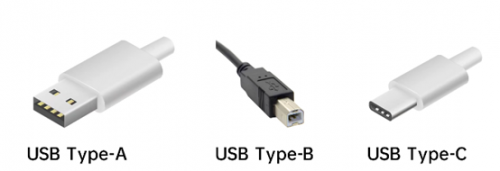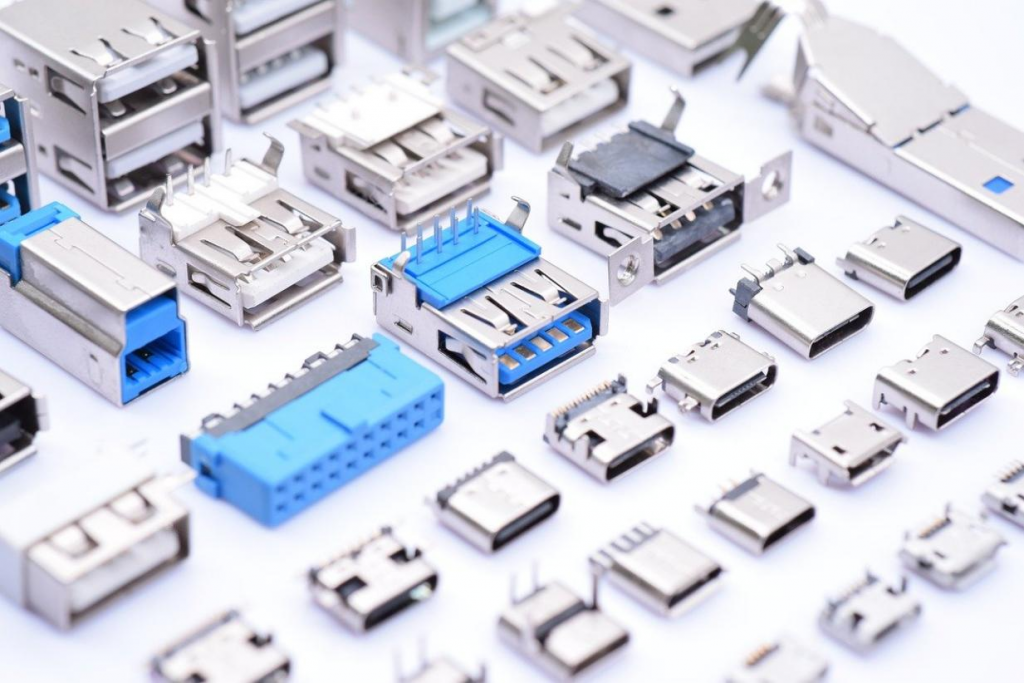USB connector usually refers to USB interface, Universal Serial Bus (abbreviation: USB) is a serial bus standard and also a technical standard for input and output interfaces. It is widely used in information and communication products such as personal computers and mobile devices, and extends to photographic equipment, digital TVs (set-top boxes), game machines and other related fields. USB4 is the latest generation, with a transmission speed of 40Gbit/s, three voltages of 5V/12V/20V, a maximum power supply of 100W, and the new Type C supports forward and reverse blind insertion.
Ⅰ. How does USB work?
The working principle of the USB connector mainly includes physical connection, handshake protocol, configuration and identification, data transmission, power supply, etc. The following is a detailed introduction:
- Physical connection. USB uses four wires for connection: VCC (power line), GND (ground line), D+ and D- (differential signal transmission line). VCC provides power, GND is the ground line, and D+ and D- are used for data transmission.
- Handshake protocol. When a device is plugged into a computer’s USB port, the computer sends a signal to the device and the device responds. This process is called handshaking. Through the handshake process, the computer and the device are configured and identified. The computer sends a request to the device, asking the device to provide its own information, such as device ID, vendor ID, etc.
- Configuration and identification. Once the device is identified, the USB controller will communicate with the device through requests and replies in order to determine the device’s properties and functions. The device responds to the request by sending specific electrical signals through D+ and D-.
- Data transmission. Once the device is identified and configured, data transmission can begin. In order to improve anti-interference ability, the electrical signal on D+ uses differential signal transmission. USB supports various transmission modes, such as control transmission mode, bulk transmission mode, etc., to meet the needs of different devices.
- Power. In addition to transmitting data, the USB interface can also provide power to the connected devices. The VCC cable provides power, and the device can get the required power from the computer through the interface.
Ⅱ. What are the three types of USB connectors?
Here are 3 common USB connector types:
- Type-A interface
This is the most common type of USB interface. It is rectangular and supports hot plugging. It is widely used to connect computer peripherals such as printers, keyboards, mice, and USB flash drives. Type-A interfaces are divided into two versions: USB 2.0 and USB 3.0. USB 3.0 has a fast transmission speed and is generally blue, while USB 2.0 has a slower transmission speed and is black.
- Type-B interface
The Type-B interface is round and requires a specific plug to connect. It is usually used to connect audio devices, video devices, and other external devices such as 3.5-inch mobile hard drives, printers, monitors, etc. Since the Type-B interface has fewer usage scenarios, it is not common in daily life.
- Type-C interface
The Type-C interface is a new type of USB interface that has emerged in recent years. It has the characteristics of both Type-A and Type-B, and can support forward and reverse plugging, with faster data transmission speed. Starting from USB 3.1, the Type-C interface has gradually become the mainstream interface type and is widely used in devices such as smartphones, tablets, and laptops. The biggest feature of the Type-C interface is that it supports double-sided insertion, making device connection more convenient and quick. In addition, the Type-C interface also supports higher transmission speeds and power transmission, providing users with a better user experience.

Ⅲ. What are the common applications of USB connectors?
USB connectors are widely used in various scenarios. Here are some common application scenarios:
- Computer peripherals: USB connectors can be used to connect computer peripherals such as printers, scanners, keyboards, mice, monitors, flash drives, etc. to achieve data transmission and device control.
- Digital audio devices: USB connectors can be used to connect digital audio devices such as audio, headphones, microphones, etc. to transmit and play audio data.
- Digital video devices: USB connectors can be used to connect digital video devices such as cameras, TV boxes, game consoles, etc. to transmit and display video data.
- Mobile storage device: USB connector can be used to connect mobile storage devices such as U disk and mobile hard disk to realize data backup and transmission.
- Embedded systems: USB connectors can be used to connect embedded devices such as sensors, actuators, etc. to achieve data acquisition and control.
- Power adapter: Some USB chargers have multiple functions. In addition to charging, they can also be used as adapters to connect other devices, such as mobile phones, tablets, etc.
If you are looking for high-quality USB connectors, KONNRA is undoubtedly your best choice. We are committed to meeting all your needs and aim to provide high-quality connector products and high-quality customer service. KONNRA’s customer service team always adheres to the concept of customer first, patiently listens to your needs, and helps you solve any problems encountered during use. Our team members can give you the most satisfactory answer as soon as possible. No matter what type of USB connector you need, we can provide you with a tailor-made solution.










